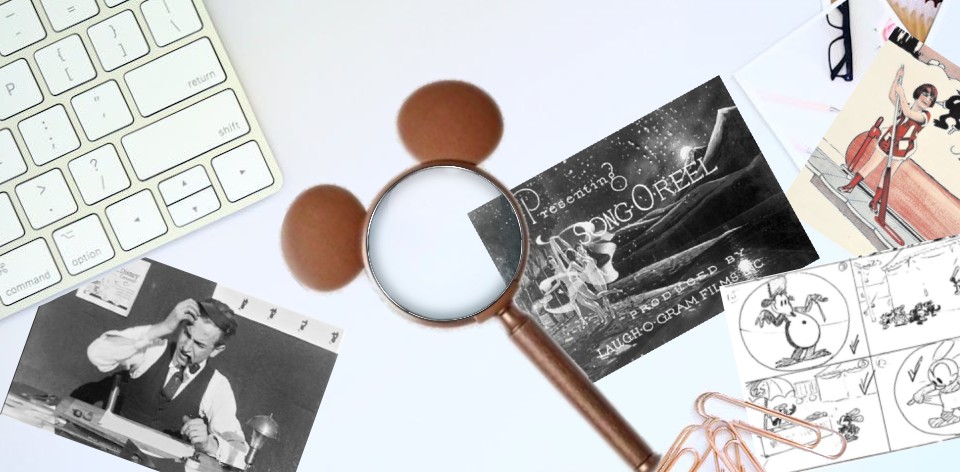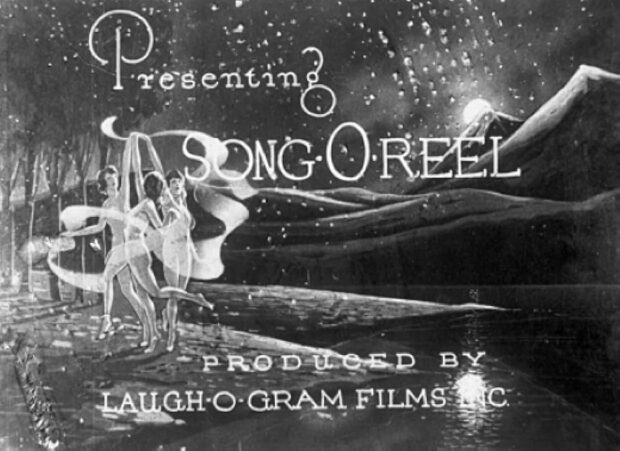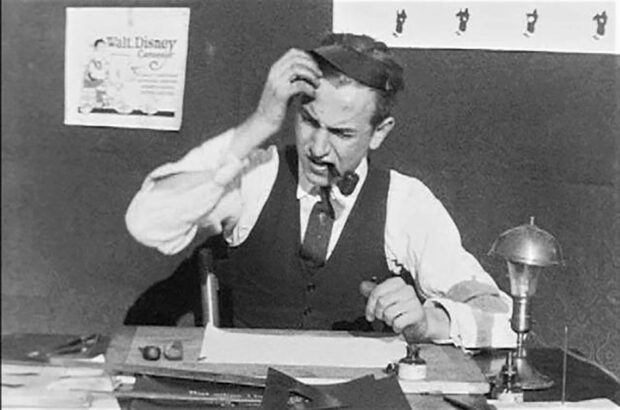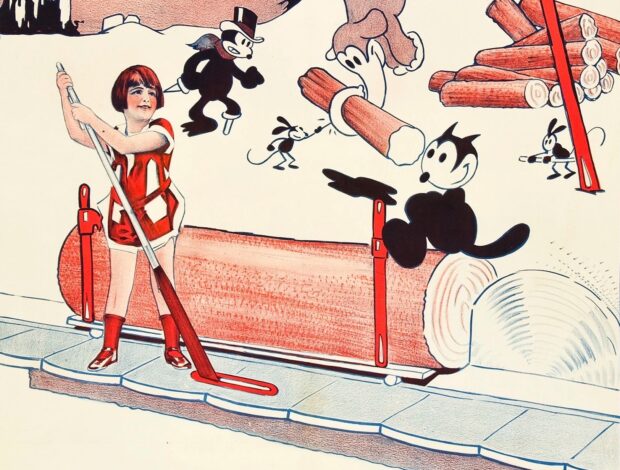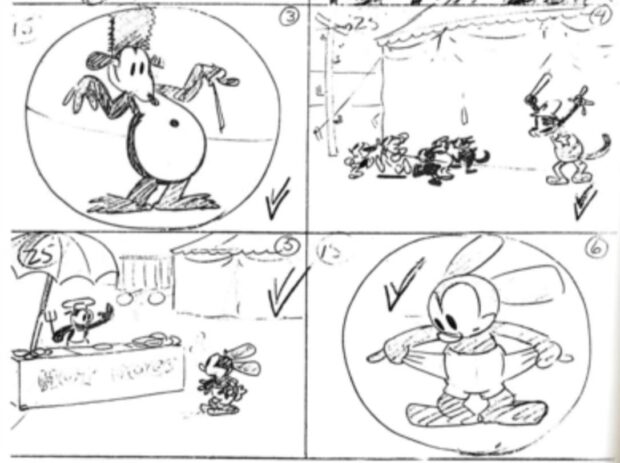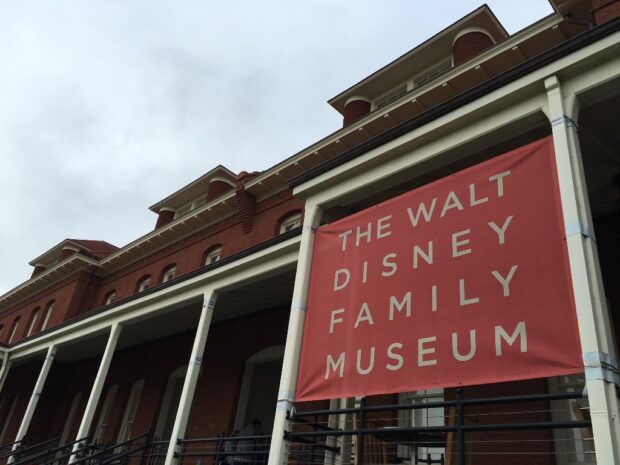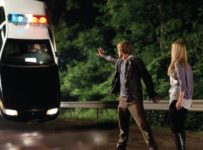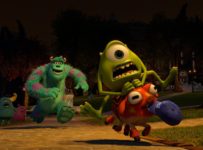Film fans know that not everything is online — but some got lost long before the web. Here we rummage through the lost and found bin looking for Martha, Alice, Oswald, Descha and Reuben.
If you’re a fan of British or Australian television of a certain era, you’re more than used to seeing ‘lost’ next to a bunch of episodes. After all, they still haven’t found all of Doctor Who. Yet surely a company the size of Disney still has all of its content, right? Right?!?
In this column, I’ve largely been looking at Disney films that may not receive much attention because they’ve either not had a home release in a while or are missing from the Disney+ streaming service. Quite separately, I’ve also started to look at those Disney films that were never made.
So, what do we mean by “lost”? I’ve seen so many folks give up after a quick Google search and declare something a “lost film.” The reality is that a vast majority of Disney’s back catalogue, as is the case with any studio, is locked away in vaults, archives and libraries. Or it has only been found commercially on limited releases.
We’re not talking about films edited for home release by Disney, such as Fantasia. There are other films, such as Song of the South, that Disney chooses not to release. Indeed, in my quest to watch all of the extant Disney films, I’ve visited state libraries, ACMI, dug through my Treasures DVDs and ferreted through op shops to name but a few places. As as librarian, I never seem to stop saying this: just because it’s not online, it doesn’t mean that it doesn’t exist.
Yet there are dozens of films that are lost or missing. This happens for any number of reasons – the fragility of early film, the volatility of nitrate prints, or a simple lack of care – but often films and negatives were intentionally destroyed after their initial theatrical run. There was no future value in the pictures in an era before home media.
Here’s a brief overview of the Disney films that we know they can’t find. Are we sure they’ve looked between the sofa cushions?
Martha (1923)
Prior to the creation of Walt Disney Animation Studios, Walt was contracted in 1921 to produce 12 short cartoons he called Newman’s Laugh-O-Grams, including some of his first fairy tales. The following year, at the tender age of 20, he incorporated Laugh-O-Gram Films.
MARTHA is the only one of these that’s currently considered lost. In Neal Gabler’s biography Walt Disney: A Triumph of the American Imagination (2006), he describes the film as a “‘Song-O-Reel,’ a live-action film with lyrics posted on the title cards, allowing the audience to sing along with the musical accompaniment.” It was basically an early Disney sing-a-long. Known by its full title of Martha: Just a Plain Old-Fashioned Name, it was based on a song by Joe L. Sanders, who was known on the jazz scene in Kansas City, where Walt was based at the time.
While now unavailable to fans, it’s an important juncture for Walt as a filmmaker. With this film, Gabler says that Walt earned enough money to buy a used motion picture camera on trial. We wonder how that venture worked out for young Walt?
Lafflets (1922-1923)
Not much is known about the Lafflets, a group of films that biographer Timothy S. Susanin describes as “new and recycled shorts.”
Made in 1922 and 1923, sometime after the Laugh-O-Grams and before the Alice Comedies, they consisted of Gold in Slow Motion, Descha’s Tryst with the Moon, Aesthetic Camping, Reuben’s Big Day, Rescued, A Star Pitcher, The Woodland Potter, and A Pirate for a Day. In Susanin’s book, Walt Before Mickey (2011), animator Rudy Ising recalls a cat and a dog laughing at their own jokes, a man with a music box crank, and Ub Iwerks appearing in a stop motion one with a clay model of President Warren G. Harding. In a letter to Universal, Jack Kloepper – Walt’s first business manager – describes the shorts and add that “we will also introduce cartoons and live action characters acting together in some productions.”
A deal with Universal didn’t happen. Gabler reports that Universal’s H. A. Boushey wrote back: “We have looked at your product and think the animation is extremely good…but we do not see how we can place it on our release program at the present time.” A similar response was received from another studio. See, even Disney got rejection letters.
All Lafflets shorts have been considered lost for quite some time, and it’s doubted whether they still exist at all. Yet the live action/animation concept was very much the thrust behind the Alice Comedies released in 1923.
Alice Comedies (1923 – 1927)
Wait a minute, you’re probably saying, I’ve seen those. You wrote a whole piece about them. What trickery is this?
Yes, beginning with Alice’s Wonderland (1923), this hybrid animation that combined a live action girl against an animated backdrop became Disney’s first major success. It also allowed Walt, and animators Ub Iwerks, Hugh Harman, Rudolf Ising, Carman Maxwell, and Isadore “Friz” Freleng to hone their craft.
Yet of the 57 short films originally produced, 16 are thought to be lost and another (Alice’s Auto Race) has only been partially found. As such, modern audiences may never know how Alice Charms the Fish (1926) or exactly what Alice’s Monkey Business (1926) entailed. It represents almost the entirety of the Lois Hardwick era and many of the Margie Gay appearances. It also means that the last appearance of Julius the Cat, in Alice the Beach Nut (1927), is lost to the ages. As both forerunner to both Oswald and Mickey Mouse, the Felix-like cat had been with the studio since the Laugh-O-Grams.
Yet the latter’s legacy lives on: you could find Julius Katz Shoe & Watch Repair and Julius Katz & Sons Appliance Repair shops in Disney California Adventure’s Buena Vista Street.
Oswald the Lucky Rabbit (1927 – 1928)
Once again, the misadventures of Oswald have been very much covered on this site. A precursor to Mickey Mouse, the success of Oswald was bittersweet for Walt, ultimately losing the rights to the character when Universal refused to pay more for Disney’s shorts.
Like Alice, there’s six of the original 27 cartoons missing: The Banker’s Daughter, Rickety Gin, Harem Scarem, Sagebrush Sadie, Ride ’em Plowboy and Hot Dogs. Some others, such as Neck ‘n’ Neck, have only been partially found or are located in the depths of national archives. The search for them is chronicled in several texts, including David A. Bossert’s Oswald the Lucky Rabbit: The Search for the Lost Disney Cartoons.
In 2006, the rights to Oswald returned to Disney. Since then, a couple of the lost films were found, such as Empty Socks which turned up in Norway in 2014, or Sleigh Bells at the BFI National Archive the following year.
So, while it seems increasingly unlikely that the remaining six shorts will turn up, the relative recency of these discoveries give completists hope for the future.
More lost treasures
Since the founding of The Walt Disney Archives in 1970, only a few years after the death of its namesake, things have gotten better. Their mission? “To collect, preserve and make available for research the historical materials relating to Walt and the company he founded.” Indeed, since the National Film Preservation Act of 1988, there’s been a higher awareness of finding some of these lost pieces of film history and making them available to the public in some form. (I also highly recommend a visit to the Walt Disney Family Museum in San Francisco, an amazing collection of pieces from the archives).
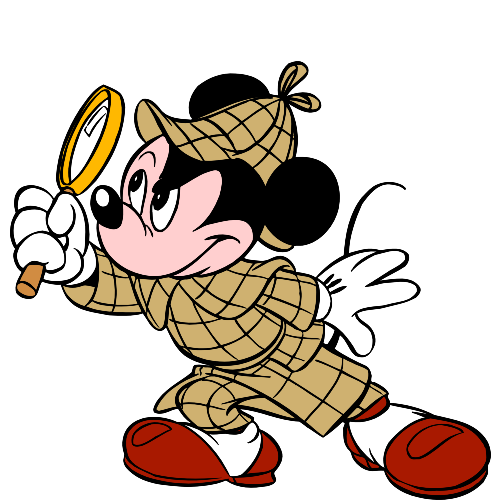
Lost media is a problem that’s not isolated to Disney, of course. In a report from the Library of Congress in 2013, it was said that “only 14% of the feature films produced in the United States during the period 1912–1929 survive in the format in which they were originally produced and distributed, i.e., as complete works on 35mm film.”
There’s a whole lot of stuff that’s not so much lost as invisible to the public. Commercial work, especially from the 1940s and 1950s, is probably just locked up in a commercial archive or labelled incorrectly. Letterboxd has happily labelled Treasure from the Sea (1946) – made for the Dow Chemical Co. – as a ‘lost film’, although my research has identified it in at least one archive collection. A compilation film called Music Land (1955) was only screened once or twice after its debut: once in 1970, and reportedly again at a private screening in Melbourne in 2010. In 2016, the late, great animation historian Jim Korkis wrote about the ‘lost’ Disney animated Figment films only being found in private archives, although some have subsequently turned up online. The point is there’s still many things lost waiting to be found – and vice versa.
Which brings us back to the twin importance of not only preserving content now, but making it available on a range of formats so that people have a sense of ownership in the things that entertain them. As Disney passes its 100th anniversary, the focus on the past only becomes stronger. Here’s hoping that some future historian won’t be trying to piece together fragments of early 21st century releases at the bicentennial.
MORE FROM DISNEY MINUS: Newman Laugh-O-Grams | Walt’s first fairy tales | Alice Comedies | Oswald the (Un)lucky Rabbit | Silly Symphonies | The Spirit of 1943 | So Dear to My Heart | One Hour in Wonderland | The early lost films
All images in this article are owned by Disney unless stated otherwise.

